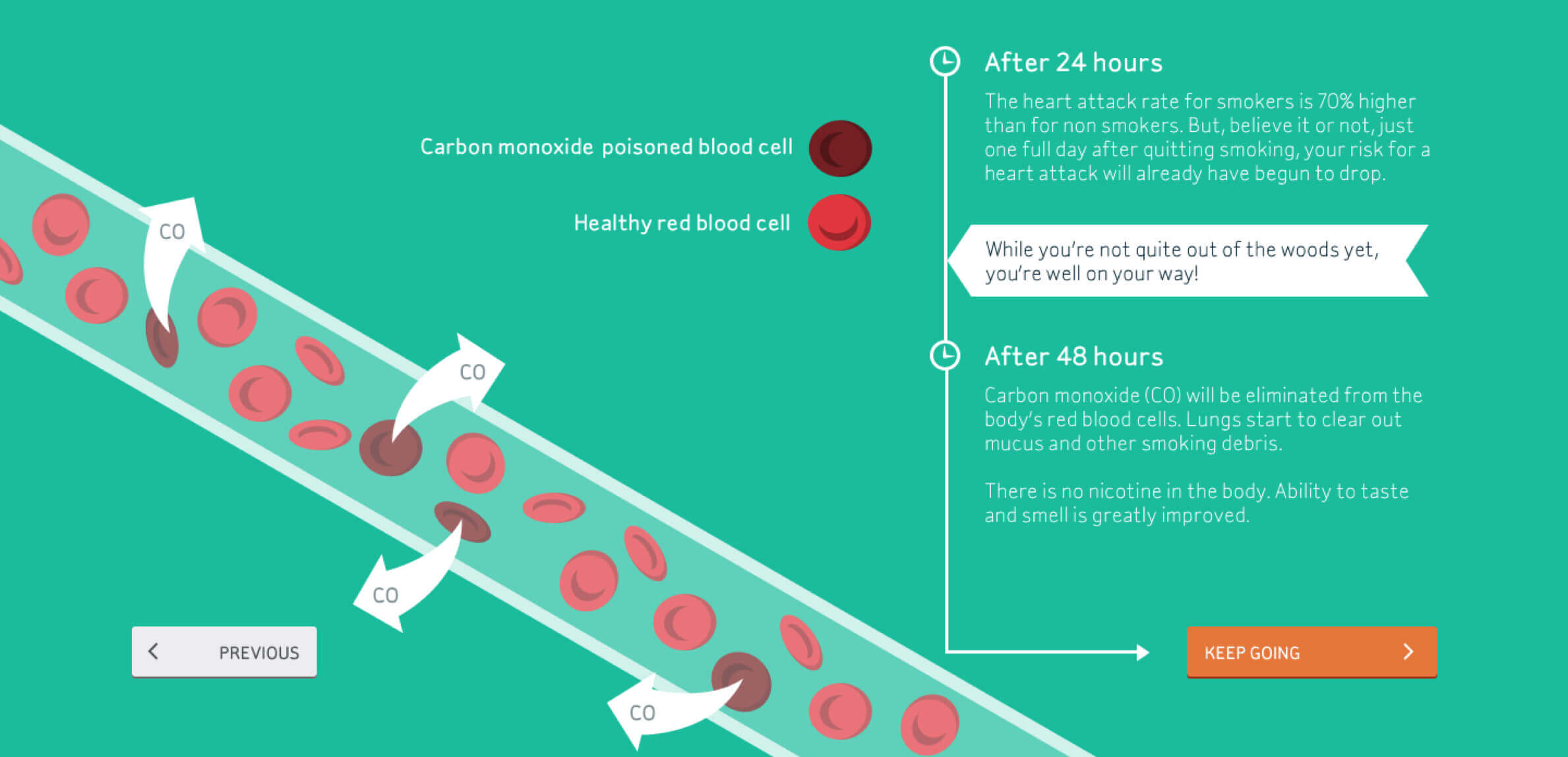Results
Increase in conversions
year on year by
Increase in Facebook engagement
search year on year
Increase in Facebook reach
year on year
- 204% Increase in conversions to sign up within 2 months from a 131% CTR increase
- Increased Facebook engagement by 400% in less than 2 months
- Increased Facebook reach from under 100/month to 10,000
Research
For smokers who have gone ‘cold turkey’ on several failed attempts, the chances of quitting are four times higher with support. We really wanted to show just how easy it is to get that support, and what to expect from the quitting process. In order to communicate with would-be quitters, the initial process had to be simplified.
Our team researched dozens of smoking cessation websites, and they tend to be very similar. We found that many bombard you with ugly pages about your health, which can be quite overwhelming for the user. We felt this approach was dull and needed modernising. What Smokefree Norfolk really needed was a nice, clean and engaging UX that does the job as required: encouraging smokers to sign-up and begin the journey to quitting smoking for good.
We achieved this in a number of ways. Firstly, we adapted the NHS design guidelines enough to retain the branding but also set the website apart from the rest. We created a range of custom illustrations instead of plastering gory photos of smokers lungs everywhere. This helped soften the experience whilst highlighting the health risks associated with smoking. This was particularly effective with the health timeline, which explained the health milestones of quitting smoking.
Social proof
The early stages of quitting smoking can be the most testing. We wanted to help quitters feel more confident and motivated by sharing real success stories and offering encouragement. We achieved this by showcasing short testimonials from people who quit smoking through the scheme, and also through our Facebook campaigns.
It was important to present information in a friendly, encouraging tone to show that Smokefree Norfolk is there to support people, and not overwhelm smokers with lots of medical terms.
Scare tactics don’t work, and facts alone won’t convince people to quit smoking. We added an emotive and relatable aspect to the campaign by showcasing the success stories of other quitters. Our Facebook campaign built on this too, connecting past smokers with future quitters.
Health timeline

Something that many people find motivating is to understand the health benefits you gain when you’ve quit smoking. We wanted to convey this in a timeline using the custom illustrations we created to help people understand what they can expect to achieve even within minutes of their last cigarette.

The timeline gives encouragement and praise for key stages of quitting smoking and highlights just how much healthier you become.
Cost calculator

There are many of these online, but few take into account the modern-day purchases you can make if you spend the money you save on cigarettes on treats and rewards instead. Seeing that you could buy an iPad Mini with 42 days’ worth of cigarette money really puts things in perspective!
Multi-channel digital marketing strategy
We set up a number of multi-channel campaigns to promote the launch of the new website. Our team created PPC and Facebook ad campaigns which targeted stop/quit smoking terms in Norfolk to drive people to sign up for help. The results were impressive — with a 204% increase in conversions to sign-up within 2 months from a 131% CTR increase.
The mobile-first approach drove an additional 50 sign-ups via the call tracking set up, a further 40 via the CTA into the abridged contact form.
Prior to the shiny new website and digital marketing campaigns, the old website was barely mustering up a few dozen session a month. Now it’s over 2,000 per month and growing fast.
Social campaigns
Further campaign success continued, with the focus on building a Facebook community. The community building included a two-pronged approach: to get ex-smokers to contribute their stories and share their tips, advice and experiences (as well as the positive impact quitting has had on their lives) and to encourage potential quitters/inspire those going through the quitting process. We had some really positive feedback, with a highly engaged and friendly community. The ex-smokers encouraging the quitters to keep going, and discussing what’s worked best for them.
The campaigns we created are based on evidence that scare tactics are ineffective and don't change people's behaviour. Instead, we focussed on sharing and building a community around positive emotions.
Phase 1 of the campaign was to build engagement with "information brokers" — the 10-20% of social media users who are most likely to contribute publicly. We sourced user-generated content from these people, focusing on how they had quit smoking and how it had improved their lives.
For Phase 2 we turned this user content into our own images to start conversations and expand the campaign's reach to people looking to quit smoking. We also shared positive information about the impact of quitting smoking. We noticed that a lot of comments were about the fear of weight gain after quitting, so we made sure to include regular posts about how to avoid gaining weight in our strategy.
